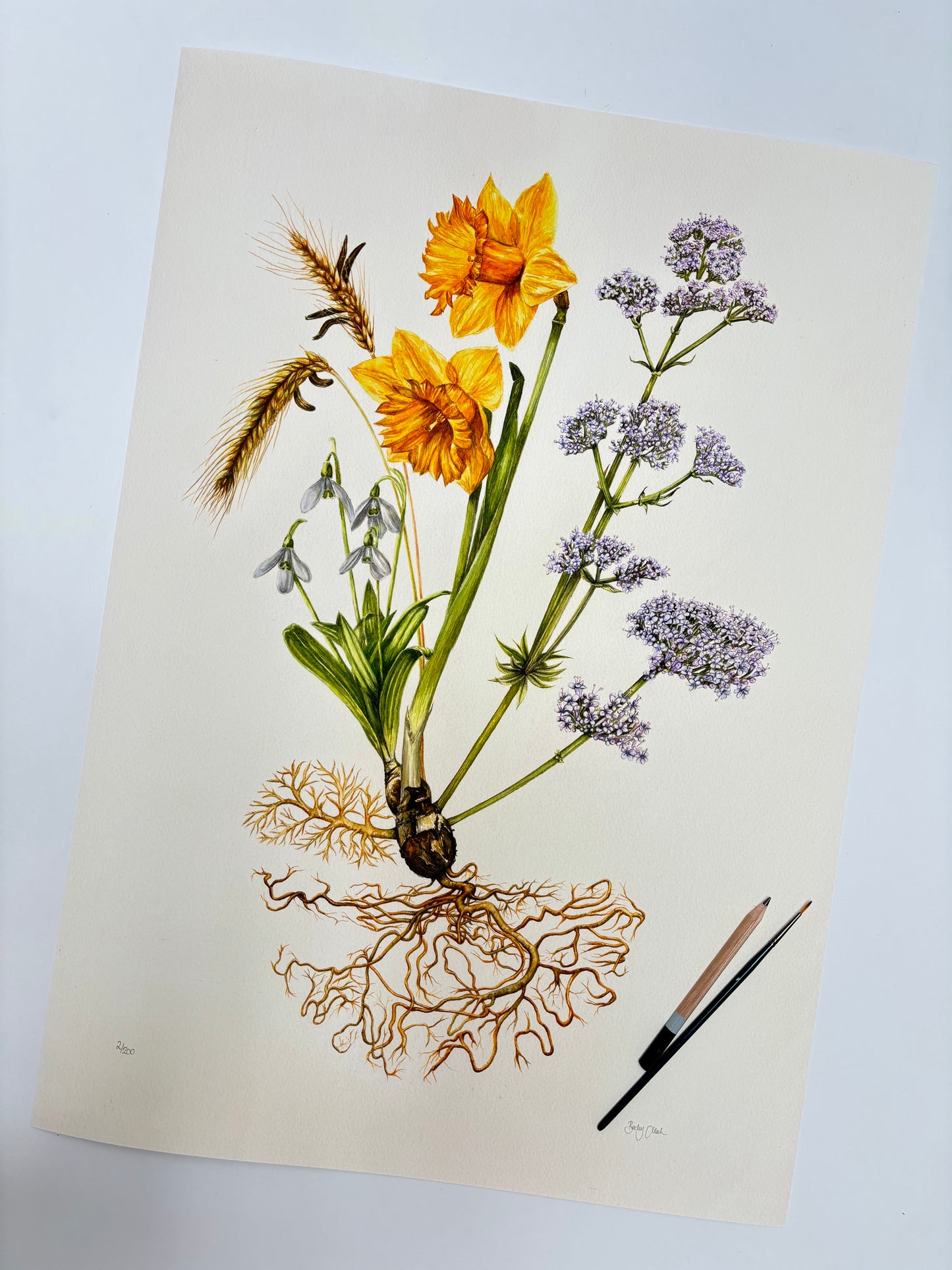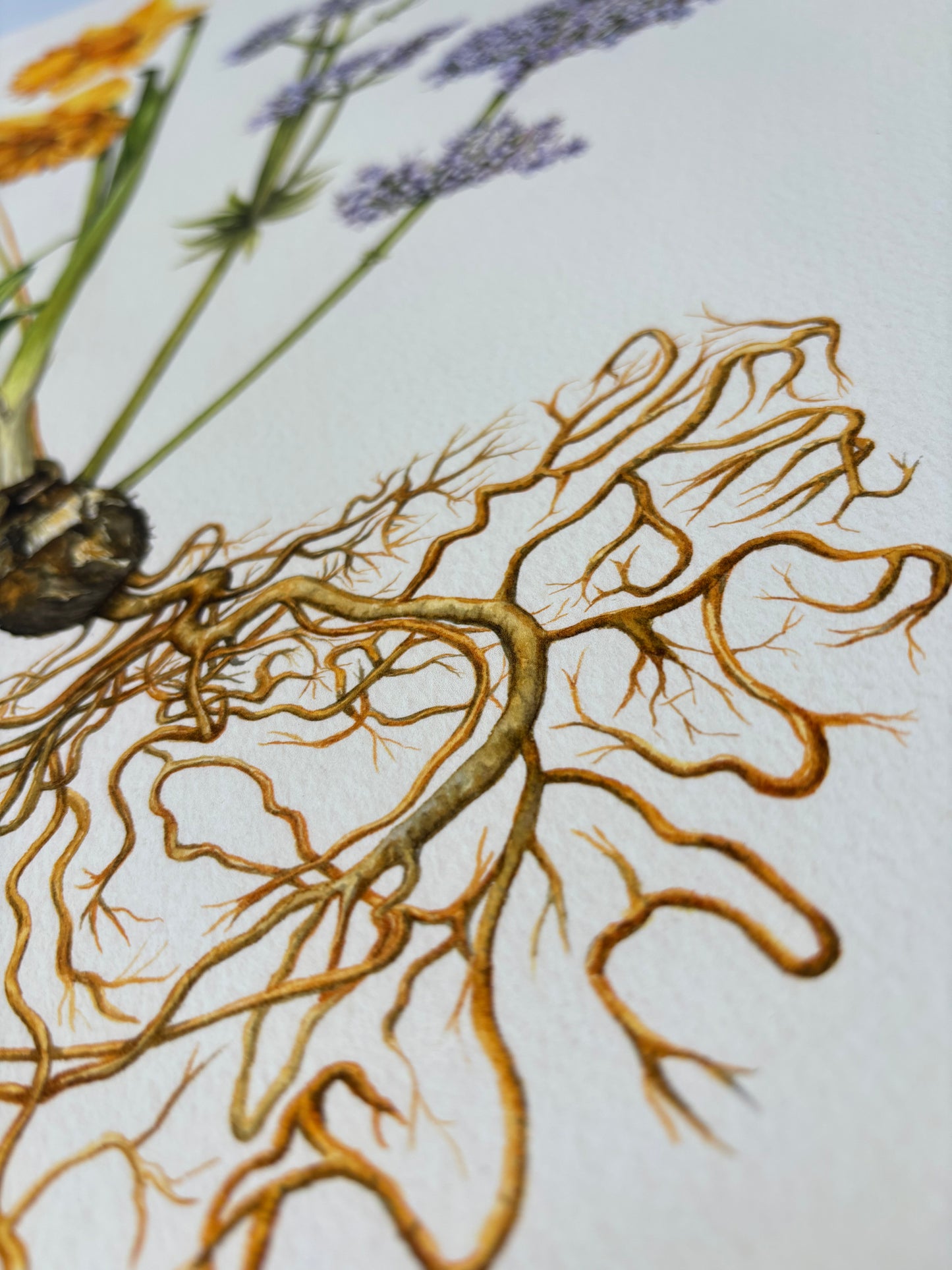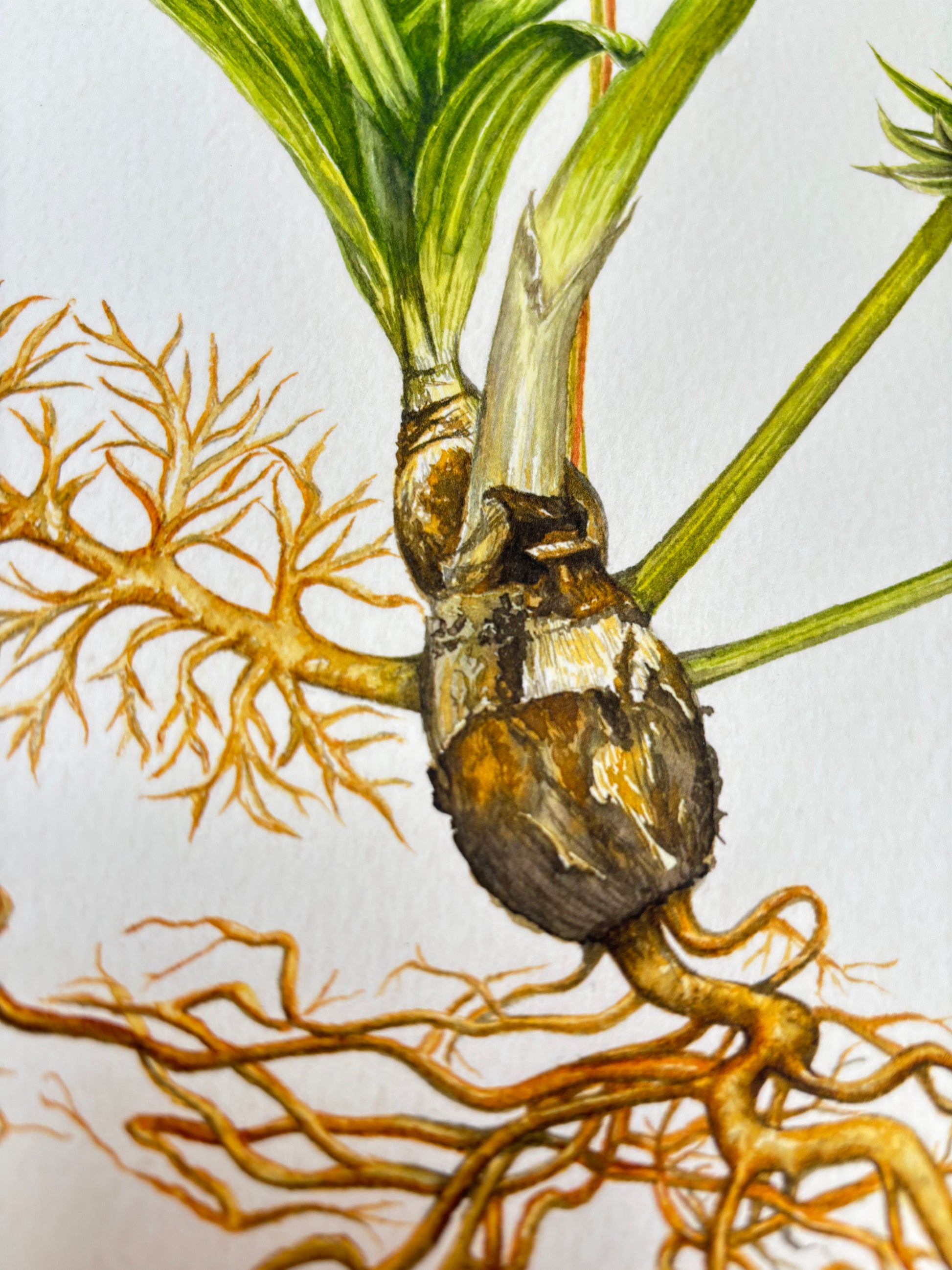The Medicinal Brain Limited Edition Print A2
The Medicinal Brain Limited Edition Print A2
The third organ in this series is the brain, a fundamental organ in the human body, which makes us who we are. In this instance, the roots represent the arterial supply to the cerebrum and the neurological pathways of the cerebellum:
Galanthus nivalis - An acetylcholinesterase inhibitor called galantamine can be extracted from the leaves and bulbs of snowdrops and is used to treat Alzheimer’s disease.
Claviceps purpurea - This fungus grows on cereal crops and contains ergot alkaloids. Ergotamine activates serotonin receptors and was used to treat migraine. A safer synthetic equivalent, sumatriptan is now used.
Narcissus - Daffodils produce a higher yield of galantamine than snowdrops and are the commercial source of the drug. Synthetic production would be more expensive.
Valeriana officinalis - Valerian is used by herbalists to improve sleep and contains valeric aicd. A derivative of valeric acid in the form of sodium valproate, is the most widely used anti-epileptic drug in the world.
Hand signed, giclée print on 310 gsm Museum Heritage acid-free paper, meeting the highest museum quality archival standards.
Size is A2 (420 x 594mm or 16.5 x 23.4 inches).
This is a limited edition with only 200 available.
Shipping is usually within 1 week and sent next day special delivery, tracked and signed for. The art is carefully packed in a solid cardboard tube and wrapped in glassine acid-free paper.
If you would like this item framed in an oak veneer, glass-fronted frame with a custom made mount, then please select this option at checkout for an additional £85. Please allow additional time for dispatch as the frames are ordered as required.
COLLECTION - if you are local to Hitchin and would prefer to collect, please send me a direct message.
Care Advice
Please keep the print out of direct sunlight and frame under acrylic or glass protection to avoid deterioration in pigments.
Please make sure your hands are clean and remove the print carefully from the packaging.
Couldn't load pickup availability














